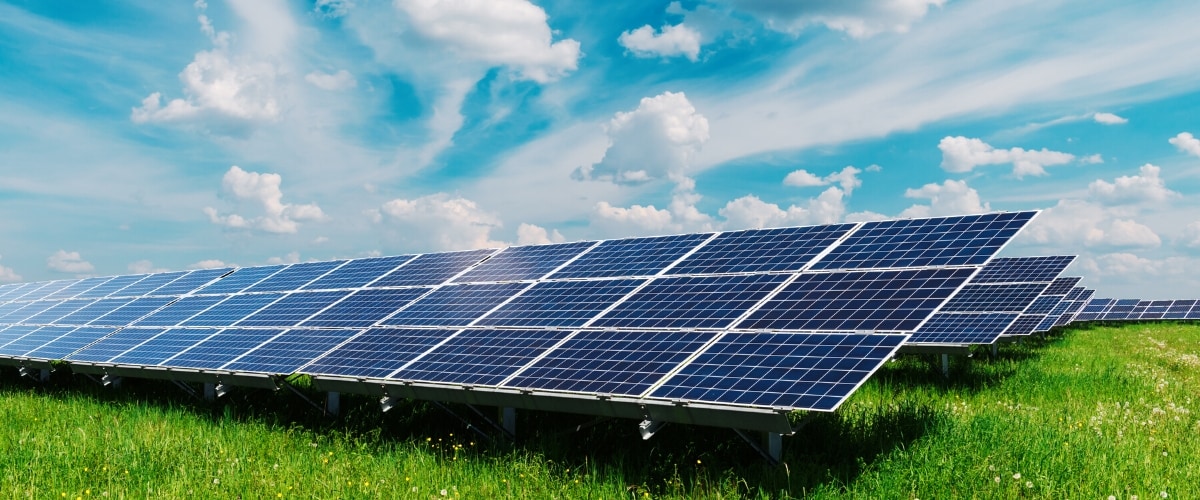5 Ideas for Making Your Gym More Eco-Friendly

Foundations are being laid for new gyms across the country and more folks are roping up to maneuver monocolor routes than ever before. Private capital, blockbuster movies, and the inclusion of rock climbing in the 2020 Olympics are creating a boom in the industry.
At the same time, the United Nations Intergovernmental Panel on Climate Change (IPCC) has released reports about the state of our environment that are pretty grim. If we’re unable to shift away from carbon and curb emissions in the next decade, we’ll face consequences that will affect our crags, our public lands, and the cities we call home.
The synchronicity of these events leaves the indoor climbing industry with an opportunity to innovate. As the industry grows, so does the opportunity to create sustainable business models that ensure a healthy future for our climbing communities, crags, and our overall environment.
Wall builders, gym owners, and marketing managers across the country agree that the climbing industry isn’t quite there yet in terms of sustainability–though we have made progress from the days of toxic handholds and standard fiberglass walls. And while it’s difficult for current gym owners to transition to sustainable wall-building or architecture standards, there are many low-hanging fruit opportunities to make your gym more eco-friendly and sustainable.
Offer Composting at Your Gym
In the United States, 30-40% of food gets wasted, and when that food ends up in landfills, it creates the greenhouse gas methane, which is about 28x more potent than carbon dioxide. None of that is good news.
But climbing gyms can be part of the solution. “One way gyms can be more sustainable is by offering composting services,” says Anne-Worley Moelter, co-owner of Movement Climbing and Fitness in Boulder.
Start by contacting your local municipality about bringing a compost bin to your gym. Then let members know to bring their compost next time they swing by for a session.
Use Efficient Hand Dryers
Not only are hand dryers a more economical choice than paper towels (paper towels cost roughly 1 cent per hand dry, while hand dryers cost between .02 and .18 cents), but they’re also better for the environment in terms of waste and deforestation.
When selecting hand dryers for your facility, it’s important to consider factors like energy consumption and efficiency. Older hand dryers can take a minute or longer to properly use and aren’t always more sustainable than paper towels due to their higher carbon footprint. But the new quick-drying airblade machines have one-third the carbon emissions of their older counterparts, and while the price might be slightly higher upfront, the lifetime cost can save you thousands.
Have Monthly Raffles for Folks Who Use Alternative Transportation
As a way to incentivize your members to create fewer carbon emissions on their way to the gym, hold a monthly raffle for folks who use alternative modes of transportation. Anyone who uses public transportation, bikes, or carpools can be entered into a raffle to win gear from your sponsors–like a new pair of climbing shoes, a rope, draws, or a chalk bucket.
“We hold an alternative transportation raffle each month and it’s always a success,” says Anne-Worley Moelter. It’s a great way for members to feel like they’re doing good for the planet while also having the chance to win something for themselves.
Update Your HVAC System
Air conditioning can be expensive and extractive in a space as large as a climbing gym. The area is too wide to properly cool and you’ll likely end up wasting electricity in the process while dealing with climbers who don’t have ideal sending temps.
Tommy Chandler, from The Front Climbing Club, says, “We use a swamp-cooler HVAC system which is way cheaper while also using far less electricity. It’s a great, sustainable option for large spaces like climbing gyms.”
Install Solar Panels on Your Roof
Thirty years ago, when gyms opened their doors in the US, solar power was outrageously expensive and a non-starter for owners. Now, solar panels are less cost-prohibitive and more accessible. While the price tag can still seem pretty steep, many municipalities and solar panel companies offer leasing options so you can either rent- or lease-to-own.
Unfortunately, this still isn’t an option in some cities across America, but in terms of sustainability, it’s one of the best ways to reduce your gym’s overall carbon footprint, while also saving money on your electric bill.
The Triple Bottom Line
When it comes to sustainability, it’s important to look at the triple-bottom-line: people, planet, profits. What’s good for one might not be good for the other, but the balance is essential. Building a gym in a specific area of a city might have greater social implications–even if sustainability choices are left out altogether.
Climbing gyms can make sustainable choices that in turn will make their members feel better about choosing your climbing gym as their third space.
About The Author
 Megan Walsh is a freelance writer and social media consultant based out of Salt Lake City, UT. Her work has appeared in a variety of outdoor publications like Climbing Magazine, Utah Adventure Journal, The Dyrt, and Misadventures Magazine. When she's not writing or climbing, you'll likely find her curled up with a book near a campfire, backcountry skiing in the Wasatch, or watching re-runs of The Office.
Megan Walsh is a freelance writer and social media consultant based out of Salt Lake City, UT. Her work has appeared in a variety of outdoor publications like Climbing Magazine, Utah Adventure Journal, The Dyrt, and Misadventures Magazine. When she's not writing or climbing, you'll likely find her curled up with a book near a campfire, backcountry skiing in the Wasatch, or watching re-runs of The Office.
